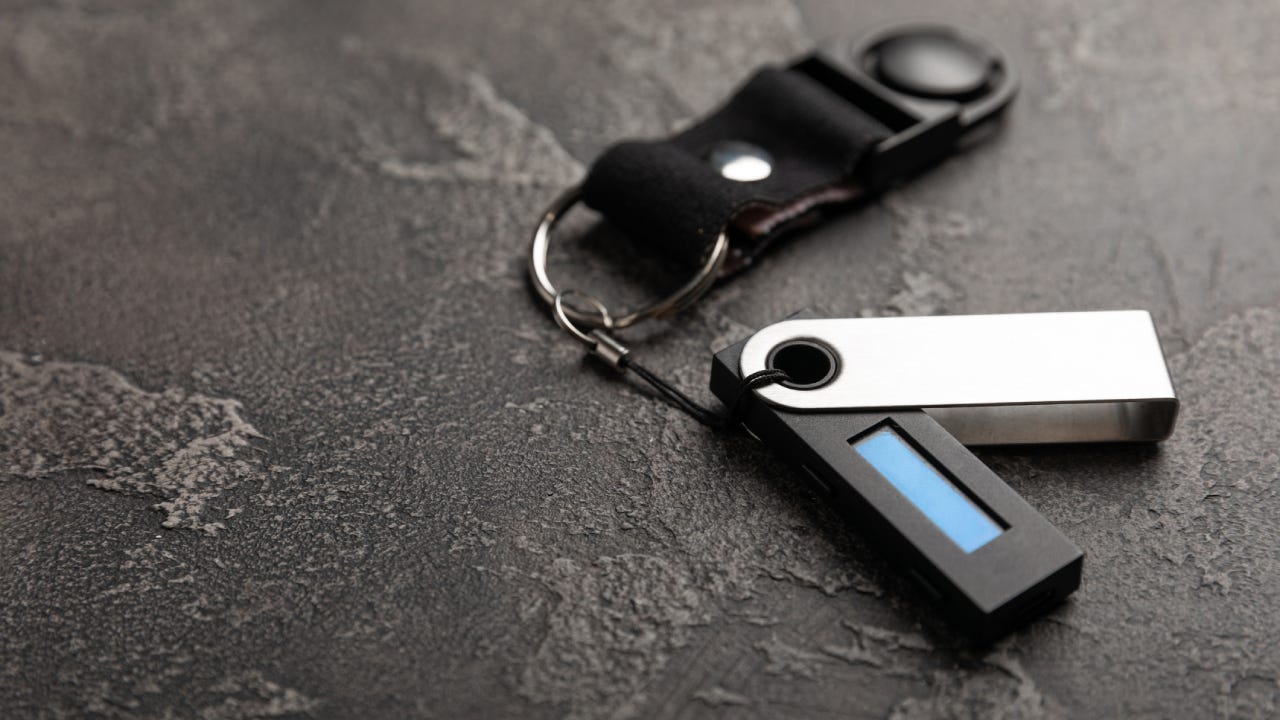What is a cold wallet?

A cold wallet is a type of cryptocurrency wallet that securely stores your private crypto keys offline, usually on a physical device. It’s also known as a hardware wallet, and it protects your digital crypto assets from online hackers by using a flash drive-like device that isn’t connected to the internet. Cold wallets are a form of what’s known in the crypto world as cold storage, and are used to ensure the safety of cryptocurrency holdings.
Here’s how a cold wallet works and what happens if you lose yours.
How does a cold wallet work?
Let’s start with the basics: When you buy cryptocurrency, the transaction is recorded on a blockchain, which is a ledger of transactions. If the blockchain is public, you can access it as long as you have an internet connection. Blockchains are generally hosted by a decentralized network of computers, meaning there’s no single controlling entity hosting the ledger.
To access your cryptocurrency, you need a public and private key, the latter only known by you for security and to safeguard your assets. A cold wallet stores your private key in what amounts to a smart memory stick. To access your crypto keys, you connect via USB or Bluetooth, depending on what kind of cold wallet you have, and use your cold wallet’s mobile or desktop app to access your funds. Cold wallets are generally password protected. For example, Ledger, which produces some of the most popular cold wallets, requires a 4- to 8-digit PIN code.
Can a cold wallet be hacked?
Almost nothing is immune to being hacked, including cold wallets. While a cold wallet ostensibly cannot be hacked remotely, if your device is stolen, that’s another story. For starters, if your PIN is stolen along with your cold wallet, someone could access your crypto. But even if you keep your PIN safe, a hacker could use a number of techniques to try to access your wallet, such as flooding the power supply to gather raw data by overloading the device, or by exploiting information leaked from the different voltage outputs as it executes a transaction. Many digital wallets have built-in protection for these types of attacks, but it’s still important to be aware of the possibilities.
Lastly, someone could steal your cryptocurrency without your cold wallet by using your seed phrase. A seed phrase is a set of random generated words that are used to recover or restore access to a cryptocurrency wallet. If someone knows your seed phrase, they can generate a new private key and access your assets.
What happens if you lose a cold wallet?
For starters, your cryptocurrency can’t technically be stolen from your wallet because it’s not actually stored in your wallet, your private keys are, and your cryptocurrency is on the blockchain. As long as you have your seed phrase, you can access your funds by generating a new key. You can then store your new key in a new cold or hot wallet (more on hot wallets below).
Furthermore, cold wallets are typically password protected and have other security features that protect your data in the case someone finds your wallet. For instance, three incorrect PIN entries triggers a factory reset for Ledger devices.
Types of cold wallets
Hardware wallets and paper wallets are the two primary types of cold wallets. Hardware wallets, as discussed above, are thumb-drive-like devices that keep your crypto keys stored digitally but offline. Paper wallets are a low-tech version of cold storage that has mostly fallen out of popular use. Your key is tied to a barcode or QR code you can print. An even lower-tech example of a cold wallet is your key written on paper. While it may seem appealingly simple, it’s cumbersome as some keys, such as Bitcoin keys, are 64-digit hexadecimal (which represent 256 numbers).
Cold vs. Hot Storage for crypto
Hot and cold storage are two different ways to store cryptocurrency but simply put, hot storage connects to the internet while cold storage does not. It’s typically easier to access hot storage, and many hot wallets are free to use. Cold storage, particularly cold wallets, cost anywhere from $30 to almost $300 and typically require a mobile or desktop app to work. Hot wallets are often connected to a particular crypto exchange, making transactions more seamless than using a cold wallet.
Hot storage for crypto includes plug-ins like MetaMask, mobile software such as Exodus or Mycelium, or crypto exchanges that offer wallets on their platforms, such as Coinbase and Binance.
While hot storage can be more convenient than cold storage, it’s more vulnerable to security breaches because it lives online.
Bottom line
A cold wallet may be right for you if you’re looking for secure storage and don’t mind adding an extra step or two to access your crypto assets. Just remember to keep your PIN and seed phrase private.






